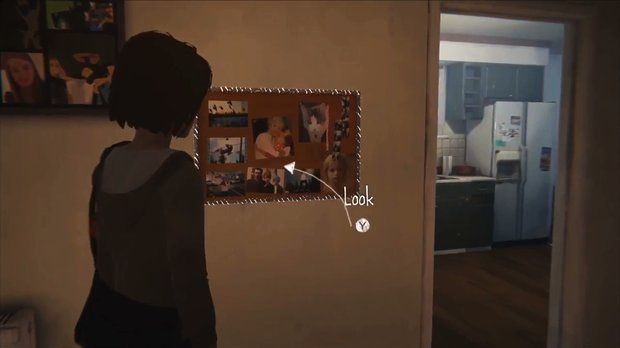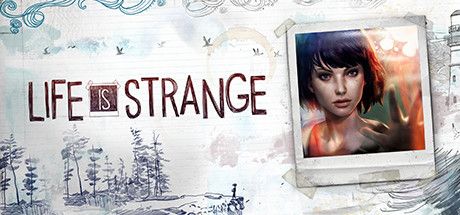- Format: Xbox One (version reviewed), PS4, PS3, 360, PC
- Unleashed: Out now
- Publisher: Square Enix
- Developer: Dontnod Entertainment
- Players: 1
- Site: http://lifeisstrange.com/agegate.php
- Game purchased by reviewer
A good review of Life Is Strange will not delve too deeply into the details of the story, and we want this to be a good review. That makes it a lot harder to explain why this is a game that you really ought to play; but we want as many people as possible to experience this, so here we go.
French development house Dontnod’s previous game was Remember Me, a third person sci-fi romp which, while decidedly linear, had a surprisingly strong story. In terms of gameplay, Life Is Strange has much more in common with any Telltale adventure you might care to mention. The first episode has only two or three instances that you might call puzzles, and none are at all complicated. This is essentially just an electronic Choose Your own Adventure book, gently nudging you forward to progress the story and make some important choices along the way.
You step into the introverted shoes of Maxine Caulfield, who makes for an unlikely heroine. Not long past her eighteenth birthday, the quiet yet talented Max returns to the town in which she grew up to study photography at college under a famous photographer. Quite aside from the time manipulation which we’ll get to shortly, Max herself is arguably what makes Life Is Strange stand out with such a fascinating sheen. She quickly and convincingly blossoms into life through storytelling of such staggering detail and skill, you won’t even realise it’s happening.

The hand-drawn style text and scribbles highlighting potential interactions is a neat choice.
The more optional nooks you explore, the more Max’s personality solidifies; but we simply couldn’t resist devouring everything that the game has to offer. This includes a diary in the menu, updated as you progress through the story, written so well that we genuinely long for a Life Is Strange novel by the same author. In a similar way to how The Last of Us told a gripping story by not saying at least as much as it did say, Life Is Strange carefully balances standard exposition with subtle incidental details and missable nuggets of info. Any intelligent person will have the story told to them without feeling patronised, and you’ll quickly develop theories about exactly what might be going on without intending to. Max really does come across as an ordinary person in an extraordinary situation. More than that; she becomes somebody that the player would like to just sit down with and enjoy the company of in a normal social situation. She becomes real. That is a monumental achievement in any storytelling medium.
A time rewind mechanic is nothing special in games nowadays, but it’s excellently implemented here. Right at the beginning, you’ll use it to answer a question in class you didn’t previously know the answer to (and this idea is spun a few different ways later); in a completely different situation you might, say, cover your tracks. As with The Walking Dead, actions and answers that will have consequences later are clearly signposted. Unlike The Walking Dead, you are allowed – and even encouraged – to reverse your decision each time should you so wish, and choose a different path to go down. Leaving an area makes your last decision permanent, but giving the player agency in this way when they don’t really have it anywhere else is a smart move.
To reluctantly point out something negative, the way in which Max’s powers are introduced is somewhat clumsy. The first episode opens with her outside in a dark and stormy night, not knowing where she is or how she got there. The amnesia cliché is thankfully brushed aside when she wakes to find she was simply daydreaming in class; but then, she finds that she can rewind time, and more or less instantly accepts it and starts using the ability as though it were as commonplace as clicking one’s fingers. It expedites things, certainly, and what follows is more than good enough to make you happily go along with it; but we can’t help thinking that perhaps there was a more clever, lengthier intro which had to be binned due to time and budget constraints.

Moody teenagers. Told you it was realistic.
That really is a minor complaint in the larger scheme of things. It’s true that no other character is as well fleshed out as Max (though the friend she has a complicated relationship with, Chloe, comes close), but everything in this game is imbued with life. Even the characters on the furthest periphery of the story feel as though they belong there, with things to do on campus when you’re not around. It should go without saying that we have great respect for the script, and the acting is mostly very good, and never outright bad. There are a surprising number of entirely optional interactions in the world (including some easy-to-miss opportunities to take a photo), and chances are that even if you stop to sniff at every corner like we did, you’ll still miss a lot the first time around.
There’s no denying that Life Is Strange is rough around the edges. The lip synching is less than perfect, the character models are at least three years out of date, and we once hit a bug that forced us to restart an area. None of that matters. What matters is that three hours with this title flew by like 30 minutes, in a single dizzying session. We can’t remember another game that so gently and perfectly lays a fantastical story onto a grounded setting. This is the game that David Cage dreams he had the talent to make but never will, and episode 2 seems painfully far away.










Comments